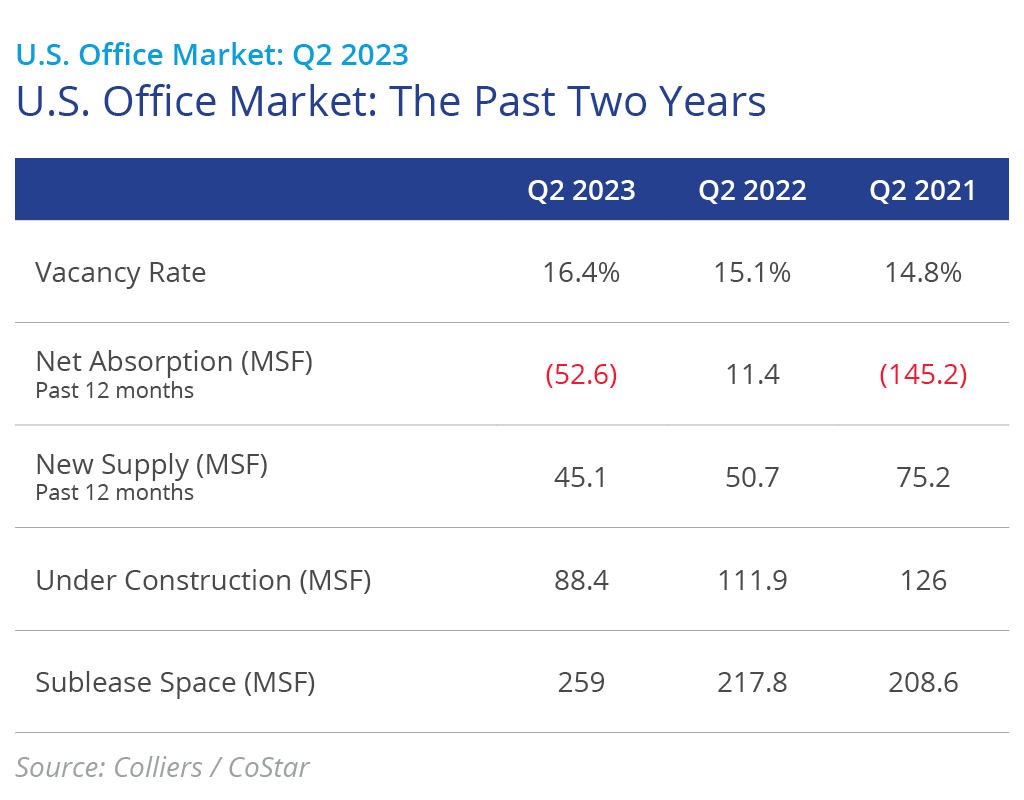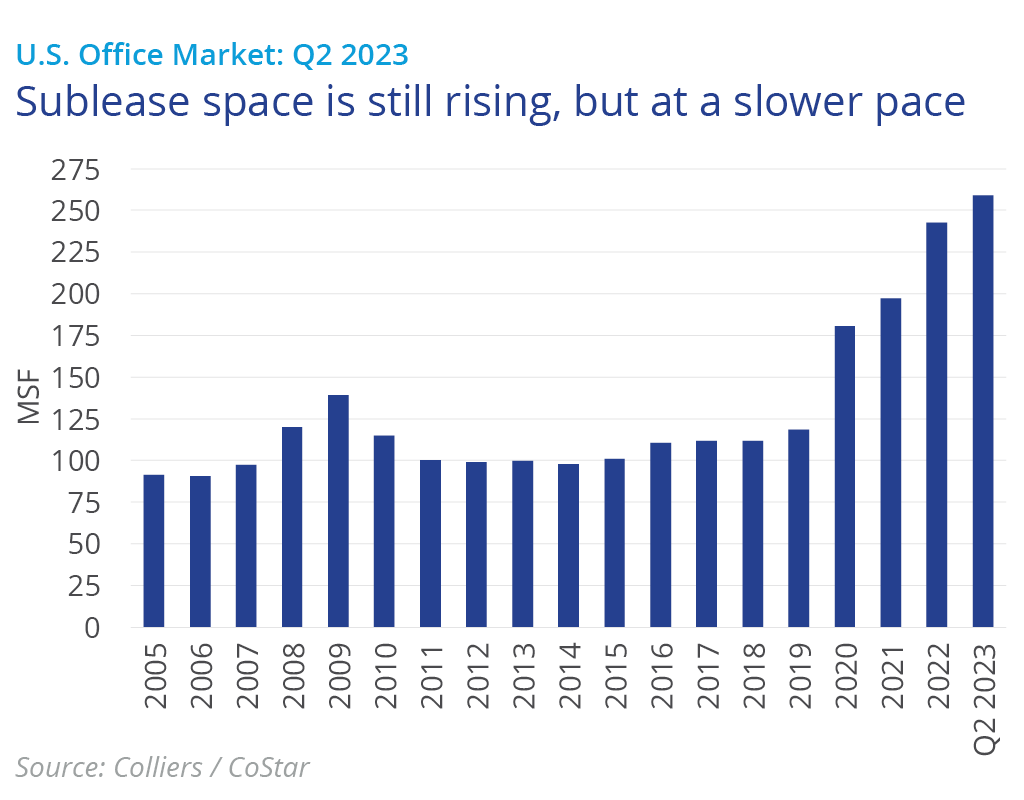The softening in key U.S. office market fundamentals, seen in the prior two quarters, continued in the second quarter of 2023. As a result, net absorption remained negative, while vacancy and sublease space hit new record highs.

The U.S. office vacancy rate stands at 16.4%, an increase of 30 basis points in the second quarter. Vacancy has inched above the prior peak of 16.3%, seen at the height of the Global Financial Crisis, with further upward pressure expected to follow.
On an encouraging note, net absorption, which measures the change in occupied office inventory, was positive in 37% of the metro office markets tracked in our national survey, up from 24% in the first quarter. National office absorption totaled negative 14.4 million square feet, compared to negative 25.4 million square feet in Q1 2023.
Nine metro markets posted negative absorption above 500,000 square feet in Q2 2023, down from 17 markets in Q1 2023. Metro occupancy losses in the first quarter were led by the San Francisco Bay Area (negative 2.8 million square feet), New York City (negative 2.7 million square feet) and Seattle/Puget Sound (negative 1.3 million square feet). Positive absorption was led by Washington D.C., Las Vegas and Memphis.
There is a record 259 million square feet of sublease space available across the U.S. office market, up from 254 million square feet in Q1 2023, and considerably higher than the prior cycle’s peak of 143.3 million square feet seen in Q2 2009. As firms continue to evaluate their post-COVID real estate needs, sublease space will remain a cost competitive, short-term option until there is greater clarity on economic and business direction.

Construction activity continues to slow. Currently, 88.4 million square feet are underway, down 46% from this cycle’s peak of 164 million square feet in Q3 2020. The New York metro area has the largest amount of ongoing construction, at 12 million square feet, followed by the San Francisco Bay Area, with 8.1 million square feet, which is mostly focused on Silicon Valley, and Seattle, with 7.4 million square feet.
Asking rates are, by and large, showing little change. However, the gap between asking and effective rents remains significant, with generous concessions on offer. Tenant improvement allowances of $100 per square foot or more are available in most of the leading U.S. office markets when a tenant signs a new 10-year lease on Class A space. In a similar manner, two-thirds of the leading markets are offering 10 months or more of rent abatement on such transactions.
The return to the office remains gradual at best. Most firms are adopting hybrid working with a minimum of three days in the office per week emerging as the common standard. However, some employers are mandating a full-time return.
Tenant downsizing has become the norm, with space reductions of at least 20% to 30% being implemented by large occupiers on new leases and renewals. While existing lease obligations will temper the pace of such changes, the net result should be sustained upward pressure on vacancy.
Pending a resurgence in demand, vacancy rates and sublease availability are set to continue to rise over the rest of 2023, placing increased pressure on rents. As leases expire, the return of sublease space will also create a challenge for landlords in terms of both a drop in revenue and how to position and price such space. Class A downtown sublease space is being offered at a 30% rental discount to direct space across the leading markets.
With repricing taking place on the sales side, it seems imminent in the rental market driven by the triple-hit of downsizing, sublease space and rising vacancy rates, as landlords become increasingly aggressive to secure tenants.
Performance and demand differentials are expected to widen. Bifurcation should be most evident between space class and age, but will also occur between and within markets, and different business sectors. Opportunities should become more selective, but quality will win out as firms seek the optimal work experience to retain and attract the best talent and bring employees back to the office.

 U.S. National Research
U.S. National Research

 Sheena Gohil
Sheena Gohil Bob Shanahan
Bob Shanahan Dougal Jeppe
Dougal Jeppe Kai Shane
Kai Shane
 Bret Swango, CFA
Bret Swango, CFA Michelle Cleverdon
Michelle Cleverdon
 Aaron Jodka
Aaron Jodka